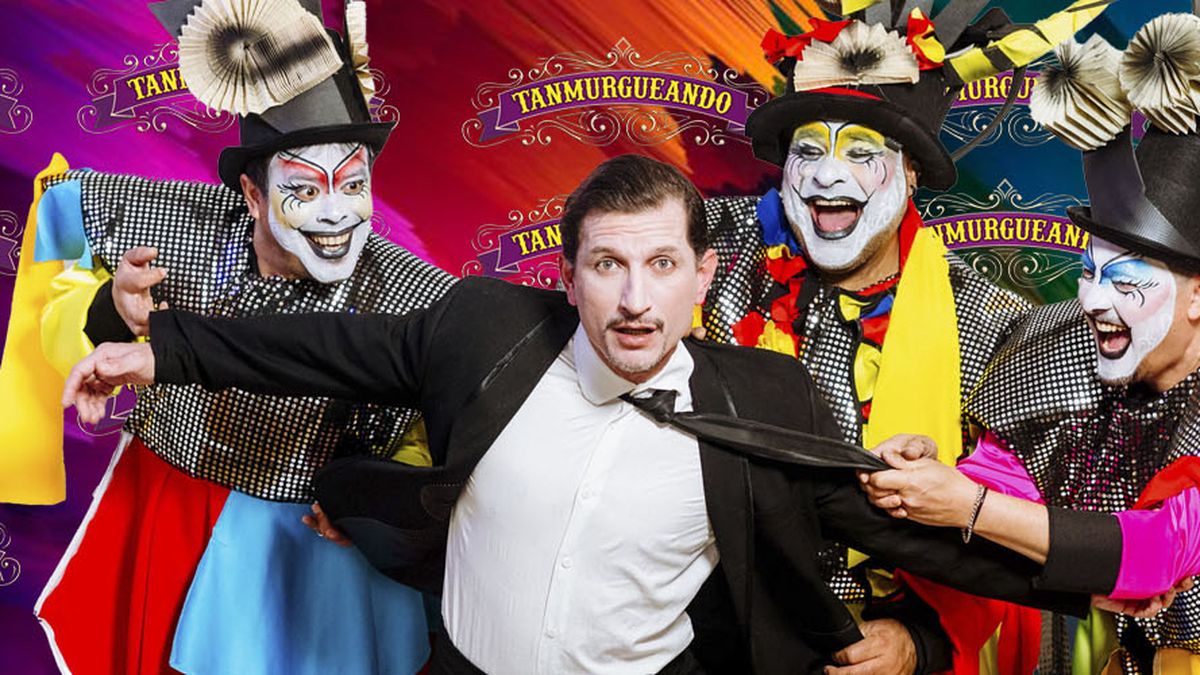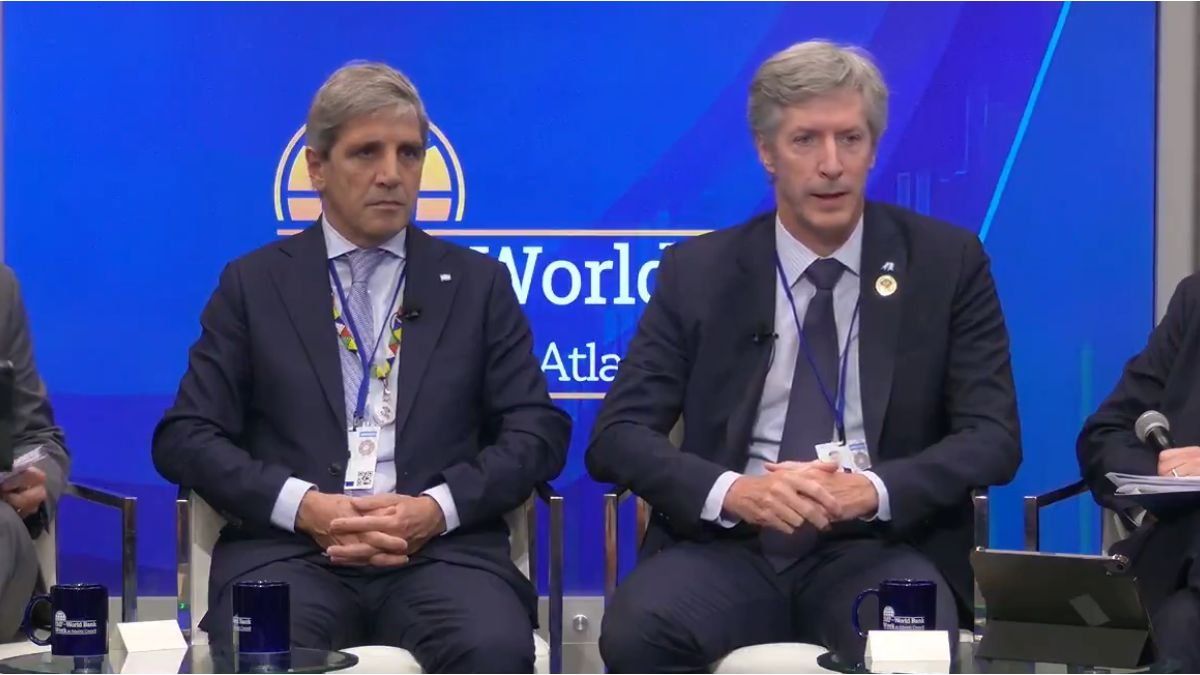“The new generations, influenced by digital culture and global trends, sometimes show less interest in popular traditions,” says Sebastian Acostacreator of “Tanmurgueando”, a show that weaves an unexpected romance between music and tango.
It will be presented next Monday at 8pm at the Metropolitan Theatre and features 6 murgueros on stage, the actor Martín Perrone and 8 dancers. We spoke with Acosta, who recalled references of the murga and candome as Ruben Rada, Jaime Ross and Hold on Catalina, inter alia.
Journalist: We live in times in which this love for our roots and the vindication of popular traditions is somewhat blurred. What can you say?
Sebastian Acosta: It is true that nowadays, attractions are increasingly dominated by augmented reality and extreme experiences, which has led to the fact that the new generations, influenced by digital culture and global trends, sometimes show less interest in popular traditions. With “Tanmurgueando”, we seek to highlight how our cultural roots are, in many cases, that deep connection that we all long for. The artists who are part of this show are committed to the dissemination of our cultural wealth both in Argentina and in the rest of the world. Latin American culture has an undeniable appeal, and in our country it is essential to continue revaluing and celebrating it.
Q: How do you connect the ancestral with the contemporary, how do you give it validity and a new form so that it is “old” or solemn and attracts new audiences?
SA: The show is a contemporary and artistic reinterpretation of traditional elements. This includes incorporating rhythms in folk music and mixing traditional dances with contemporary choreography. By reinterpreting the ancestral, the essence is maintained but presented in a format that resonates with today’s audiences.
Q: How do you see young people in relation to this tradition of milonga, candombe and murga?
SA: The relationship of young people with the traditions of the milonga, candombe and murga of Uruguay is complex and varied, but in general, there is a tendency to revalue and reinterpret these cultural expressions. On the one hand, some young people maintain a strong bond with these traditions, seeing them as a means to connect with their cultural identity and family heritage. For many, participating in a candombe comparsa or a murga is a form of belonging and an act of cultural resistance against external influences and globalization. In the case of the murga, there is a growing interest among young people who find in this form of musical theatre a means of artistic and social expression. The murga allows new generations to express their opinions on politics, society and daily life, using humor and satire. In addition, youth murgas have introduced aesthetic and thematic innovations, which have rejuvenated this tradition and kept it relevant. On the other hand, candombe has been a powerful tool for Afro-descendant youth and also for those seeking to celebrate and preserve Uruguay’s cultural diversity. Young people actively participate in the Llamadas parades and in the different candombe groups, not only as a form of celebration, but also as an act of cultural resistance and vindication of their African roots.
Q: What references can you highlight?
SA: Ruben Rada is one of Uruguay’s most important musicians and composers and an ambassador of candombe. His work fuses candombe with jazz, rock and other genres, introducing this tradition to global audiences and promoting candombe as a fundamental pillar of Uruguayan music. Lobo Núñez is a performance artist and drum maker, and is a fundamental reference for candombe. He has been a key figure in promoting candombe not only as a musical genre, but also as a cultural practice of profound social and community importance, especially in the Afro-descendant neighborhoods of Montevideo. Eduardo “Dingui” Hernández is considered one of the greatest exponents of candombe in Uruguay, he is the leader of the comparsa C1080. He has played a crucial role in keeping the candombe tradition alive, teaching young people and leading parades during the Uruguayan Carnival. Jaime Roos, although not a murguista in the traditional sense, has been instrumental in bringing the sound of murga to the international stage. Through his music, which often incorporates murga rhythms and elements, he has helped popularize this Uruguayan tradition and integrate it into Uruguay’s broader musical repertoire. Raúl “Tinta Brava” Castro, a long-time member of the Falta y Resto murga, is known for his lyrics full of social and political criticism, which have been a hallmark of Uruguayan murga. He has been an influential figure in the murga movement, helping to renew murga and adapt it to modern times. Agarrate Catalina is one of Uruguay’s most famous murgas, known for its ability to fuse social criticism with satire and humor. The murga has traveled internationally, bringing the Uruguayan tradition to stages around the world and attracting a new generation of fans. Tabaré Cardozo is a murguista and musician, a prominent composer and murga director who has brought the tradition to new audiences, especially young people. Paula “Cuerda” Carrizo, one of the first female percussionists to stand out in the candombe field, Carrizo has broken gender barriers in a space traditionally dominated by men, inspiring many young women to actively participate in candombe.
Q: What can you say about culture in Argentina today and its correlation with Uruguay?
SA: Argentine and Uruguayan culture share deep historical, social and cultural roots, which are reflected in several common artistic expressions, traditions and customs. These similarities are the result of a shared history in the Río de la Plata region, where both countries have influenced each other’s cultural identities, especially in the areas of music, dance, literature and gastronomy. One of the strongest cultural connections between Argentina and Uruguay is the tango. The tango originated in the late 19th century in the slums of Buenos Aires and Montevideo, and quickly became a cultural symbol of both cities. Milongas, or social events where tango is danced, are popular in both capitals, and many tango figures have been shared between both countries, such as Carlos Gardel, who has a disputed identity between Argentines and Uruguayans. Although candombe is a genre that has its deepest roots in Uruguay, especially in Montevideo, it has also had a presence in Argentina, particularly in Buenos Aires and in areas with a significant Afro-descendant community. The murga is a form of popular musical theatre that is characterised by its satirical style, and is an essential element of the carnival. In Argentina, especially in Buenos Aires, the murga also exists, although with some differences in form and content. The murgas from Buenos Aires tend to have a focus more on dance and parade, while the Uruguayan murgas have a more lyrical and theatrical content, with a strong social and political critique.
Source: Ambito
I am Pierce Boyd, a driven and ambitious professional working in the news industry. I have been writing for 24 Hours Worlds for over five years, specializing in sports section coverage. During my tenure at the publication, I have built an impressive portfolio of articles that has earned me a reputation as an experienced journalist and content creator.




